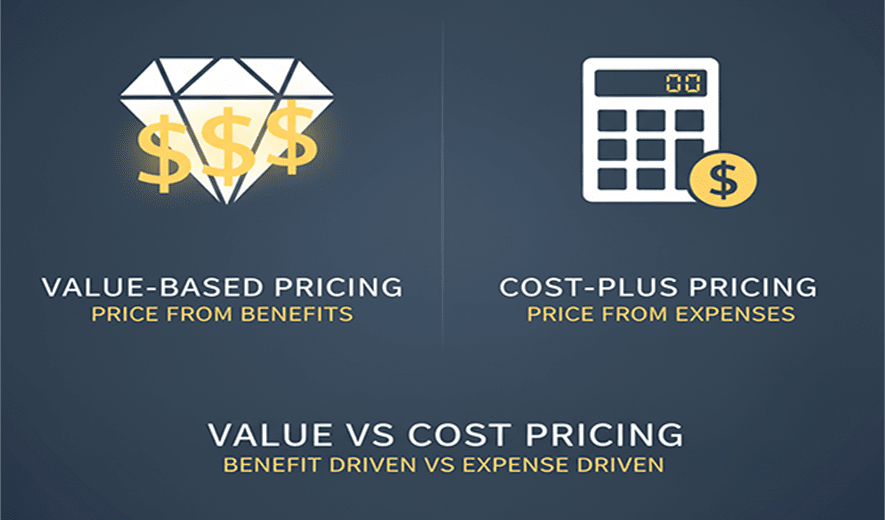
Value-based Pricing vs Cost-plus Pricing
Value-based pricing sets a product's price according to the perceived value it provides to the customer, while cost-plus pricing calculates the price by adding a fixed markup to the cost of production. The primary difference lies in their focus: value-based pricing is external and customer-centric, whereas cost-plus pricing is internal and company-centric.
Value-based pricing
This customer-centric strategy can lead to higher profits, but it requires significant research to understand the market and how customers perceive your product's value.
How it works
- Understand customer value: Conduct in-depth market research, surveys, and customer interviews to identify what customers truly value about your product. This includes quantifying benefits like cost savings or emotional satisfaction.
- Analyze competitors: Benchmark your offerings against competitors to understand your unique value proposition in the market. Focus on what differentiates your product and justifies a premium price.
- Create buyer personas: Segment your customers into different groups based on their willingness to pay for specific features or benefits. This allows you to create tiered pricing that captures maximum revenue from different segments.
- Align price with value: Develop a pricing model that reflects the perceived value to each customer persona. This could be a flat fee, a subscription model, or usage-based pricing.
- Test and refine: Before a full launch, pilot your pricing strategy with a sample audience. Use their feedback and sales data to refine your prices and messaging over time, as perceived value can shift.
Advantages
- Higher profit margins: By focusing on value instead of costs, you can charge premium prices and increase profitability.
- Customer loyalty: The emphasis on customer needs can strengthen relationships and increase loyalty. Customers feel heard and are more likely to stick with a brand they perceive as customer-centric.
- Competitive differentiation: You can stand out by focusing on a unique value proposition rather than competing solely on price.
Disadvantages
- Resource-intensive: Implementing this strategy requires extensive and ongoing market research, which can be time-consuming and expensive.
- Complex to implement: Quantifying customer perception and aligning it with pricing can be challenging and is not an exact science.
- Unstable: Perceived value can change over time due to economic shifts, new competitors, or changing customer priorities.
Cost-plus pricing
This is a straightforward, internal-facing strategy that ensures costs are covered and a profit is made on every sale.
How it works
- Calculate total cost: Sum all fixed costs (e.g., rent, salaries) and variable costs (e.g., materials, direct labor) for your product.
- Determine cost per unit: Divide the total cost by the number of units produced.
- Add a markup: Multiply the unit cost by a predetermined markup percentage to arrive at the final selling price.
Advantages
- Simplicity and predictability: The pricing formula is easy to calculate and implement, providing predictable profit margins as long as costs remain stable.
- Clear justification: If you need to increase prices due to rising production costs, the change is easy to justify to customers.
- Low-risk: This method minimizes the risk of setting a price below your costs and incurring a loss.
Disadvantages
- Ignores customer and market: Since it only accounts for internal costs, it ignores external factors like customer demand, competitor pricing, and perceived value. This can lead to missed profit opportunities if customers are willing to pay more or low sales if the price is higher than competitors' offerings.
- Reduced efficiency incentive: With a guaranteed profit margin, there is less incentive to reduce costs and operate more efficiently.
- Inflexible: The formula-based price can be rigid and slow to adapt to changing market conditions.
